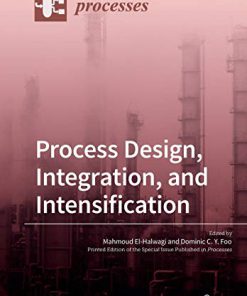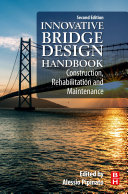Managing Airline Networks Design Integration and Innovative Technologies 1st Edition by Markus Franke ISBN 9780367332372 036733237X
$50.00 Original price was: $50.00.$25.00Current price is: $25.00.
Managing Airline Networks Design Integration and Innovative Technologies 1st Edition by Markus Franke – Ebook PDF Instant Download/Delivery: 9780367332372 ,036733237X
Full download Managing Airline Networks Design Integration and Innovative Technologies 1st Edition after payment

Product details:
ISBN 10: 036733237X
ISBN 13: 9780367332372
Author: Markus Franke
Managing Airline Networks Design Integration and Innovative Technologies 1st Edition Table of contents:
Part I State-of-the-art network management at airlines
1 Introduction
1.1 Definition of networks
1.2 Non-linear production models
1.3 Definition of network management
1.4 Value of network management for airlines
Notes
2 Planning paradigms for different types of networks
2.1 Hub and spoke networks
2.2 Point-to-point networks
2.3 Gateway networks
2.4 Comparison of network types
2.5 Historic evolution of network management paradigms
2.6 Historic approach: leg-based planning, pro-rating
2.7 Downsides of the pro-rating method
2.8 Current approach: O&D-based planning
2.9 Computation of O&D-based planning
2.10 Comparison: O&D-based approach in revenue management
2.11 Network management at low-cost carriers and integrators
Notes
3 Key performance indicators for successful network design
3.1 Key performance indicators
3.1.1 Revenue-related indicators
3.1.2 Distance-related indicators
3.1.3 Cost-related indicators and asset utilisation
3.2 Heuristics and rules of thumb
3.2.1 Pricing
3.2.2 Trade-off between aircraft size and frequency of flights
3.2.3 What is a desirable seat load factor?
3.2.4 How many passengers does an airline need on a certain route to justify a direct connection?
3.2.5 How many passengers are needed to fill one incremental aircraft?
3.2.6 How many services per day or per week are needed to be profitable on a certain route?
3.3 Profit calculation scheme
3.3.1 First stage of the network profit calculation scheme
3.3.2 Second stage of the network profit calculation scheme
3.3.3 Third stage of the network profit calculation scheme
3.3.4 Impact of fuel price and other external factors on airline profit
3.3.5 Impact of overcapacities on airline network profit
3.3.6 Profitability of low-cost carriers
Notes
4 Network management processes
4.1 Interplay between network management processes, accountabilities and tools
4.2 Integrated versus fragmented network management approach
4.3 Unravelling network management processes by type of resource
4.4 Unravelling network management processes along the timeline
4.4.1 Long-term network planning
4.4.2 Mid-term network planning
4.4.3 Market planning and rotational planning
4.4.4 Customer preferences and buying behaviour
4.4.5 Impact of the geopolitical location of a hub on network efficiency
4.4.6 Role of global distribution systems (GDSs) in airline distribution
4.4.7 Additional operational data in the flight schedule
4.4.8 Frequency of flight schedules
4.4.9 Short-term network planning and resource steering
4.4.10 Cascading network planning processes over time
4.4.11 Design of long-term abstract plans versus actual flight schedules
4.4.12 Interplay between network planning and financial planning
4.4.13 Transition from sequential to overlapping process flow
4.4.14 Trade-off between stability and flexibility of plans
4.5 Network management and adjacent processes
4.5.1 Fleet planning process
4.5.2 Hub structure and hub resource planning
4.6 The ‘transmission belt’ concept
Notes
5 Network optimisation models and planning tools
5.1 Linear programming for network capacity and resource allocation
5.2 Logit models for the description of buying criteria under competition
5.3 Simplified example for planning with a logit model
5.4 Reliability of GDS transaction data
5.5 Definition of strategic and financial targets
5.6 Calculation of market share
5.7 Estimate of revenues and costs of flight programme
5.8 Iteration of results
5.9 Impact of timing on the perceived attractiveness of an airline’s offering
5.10 Impact of product quality on the perceived attractiveness of an airline’s offering
5.11 Impact of pricing on the perceived attractiveness of an airline’s offering
5.12 Iteration process in case of an unfavourable cost position
5.13 Convergence of market model
6 Impact of network design on airline planning
6.1 Network design and planning scenarios
6.2 Network and market coverage
6.2.1 Basic approach to market coverage
6.2.2 360 degree approach in hub airports
6.2.3 Effect of airline alliances
6.2.4 Ramping up a network
6.2.5 Extraction strategy
6.2.6 Examples of airlines ramping up their networks
6.2.7 Risks of ramp-up strategy
6.3 Network and fleet structure
6.3.1 Impact of business model
6.3.2 The S-curve effect
6.4 Network and human resources
6.5 Network and hub structures
6.5.1 Bank structure of a hub
6.5.2 Options for mid-sized hubs: the meta-model
6.5.3 Top-down versus bottom-up approaches to hub planning
6.6 Network and regulatory aspects
Notes
7 Impact of network design on airline performance
7.1 Impact of network design on commercial success
7.1.1 Downsides for under-critical hubs
7.1.2 Build-up of continental feeder/de-feeder network
7.1.3 Types of connections realised in a hub
7.1.4 Case study for optimisation of bank structure
7.1.5 Correlation between number of banks and asset utilisation
7.1.6 Results of the hub reshuffling initiative
7.1.7 Impact of hub structure on the profitability of destinations
7.1.8 Clustering of destinations by O&D size and profitability
7.1.9 Lessons from the clustering for network design and scheduling
7.2 Impact of network design on operational stability
8 Case study on levers and effects of network management
8.1 Basic assumptions for the case study
8.2 Macroeconomic view on market efficiency
8.3 Non-equilibrium scenarios
8.4 Impact of overcapacity in a market
8.5 Price war scenario
8.6 Return to equilibrium after a price war
8.7 Conclusion of case study
Part II Interplay with adjacent functions
9 Interplay and integration with adjacent functions
9.1 Interplay with fleet management
9.1.1 Iterative fleet and network development
9.1.2 Integrated fleet and network development
9.2 Interplay with hub management
9.2.1 Sequential network and hub planning
9.2.2 Integrated network and hub planning
9.3 Interplay with crew planning
9.3.1 Iterative network and crew planning
9.3.2 Integrated network and crew planning
9.4 Interplay with maintenance planning
9.4.1 Iterative network and maintenance planning
9.4.2 Standard maintenance events: ‘letter checks’
9.4.3 Integrated network and maintenance planning
9.5 Interplay with revenue management
9.5.1 Sequential network and revenue management
9.5.2 The bid price concept
9.5.3 O&D-based revenue management
9.5.4 Integrated network and revenue management
9.5.5 Outlook: new trends in pricing and revenue management
Notes
Part III Trends in network management
10 New demand forecasting models
10.1 Key questions and challenges for demand forecasting
10.2 Current practice: use of MIDT and booking data
10.3 Outlook: next-generation demand forecasting models
Note
11 New database technologies (‘big data’)
11.1 The ‘big data’ vision
11.2 Big data applications at airlines
12 Machine learning and artificial intelligence
12.1 The pedigree of machine learning solutions
12.2 Historic roots of machine learning
12.3 Machine learning use cases
12.4 Machine learning applications in network management
Note
13 Alternative optimisation models
Note
People also search for Managing Airline Networks Design Integration and Innovative Technologies 1st Edition:
managing an airline
network design airline
airline network planning and scheduling pdf
airline network planning
in airline different regions can have the same route type
Tags: Markus Franke, Managing Airline Networks, Innovative Technologies
You may also like…
Engineering - Social & Cultural Aspects of Technology
Uncategorized
Wireless Interface Technologies for 3D IC and Module Integration 1st Edition Tadahiro Kuroda
Uncategorized
Business & Economics - Human Resources
Science (General) - International Conferences and Symposiums
Commercial & Financial Law











